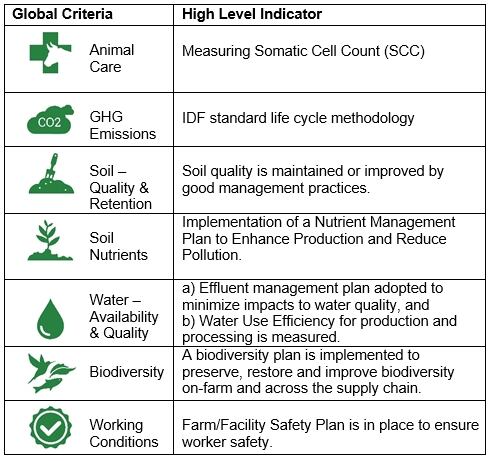Members of the DSF, representing more than 31% of global milk production, endorse the 11 criteria and prioritize these based on their own region’s challenges.
Each criterion has its own strategic intent – the dairy sector’s aspirational improvement goal – and sustainability target- and timeline-based initiatives are developed by the membership to work towards these goals at a regional, national and local level.
Annual reporting of progress is a commitment of membership.

Identifying metrics
In addition to the individual member programs, the DSF worked with scientists from the University of Arkansas, members and wider stakeholder groups (including a public consultation) to identify high level indicator metrics for the criteria; soil – quality & retention, soil nutrients, water – availability & quality, biodiversity and working conditions. These join those for animal care and GHG emissions, launched in 2016.
By establishing and tracking the indicator metrics for each criterion, the DSF said it will be able to report aggregate continuous improvement performance of the global dairy sector.
Donald Moore, chairman of the DSF, said consumers want to know that their food has been produced in a sustainable and responsible way, and reporting on these indicators will allow the dairy sector to monitor and report its performance.
Additional indicators
Work is now under way, for completion by the end of the year, to calculate the baseline against which the annual reporting will be benchmarked.
The remaining four indicators (product safety & quality, market development, rural economies and waste) will be developed through a multi-stakeholder approach, starting in January 2018.
